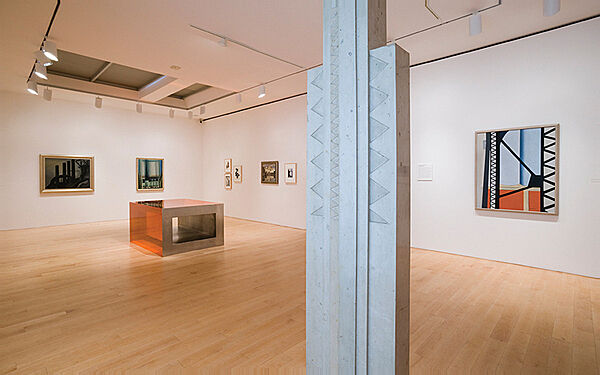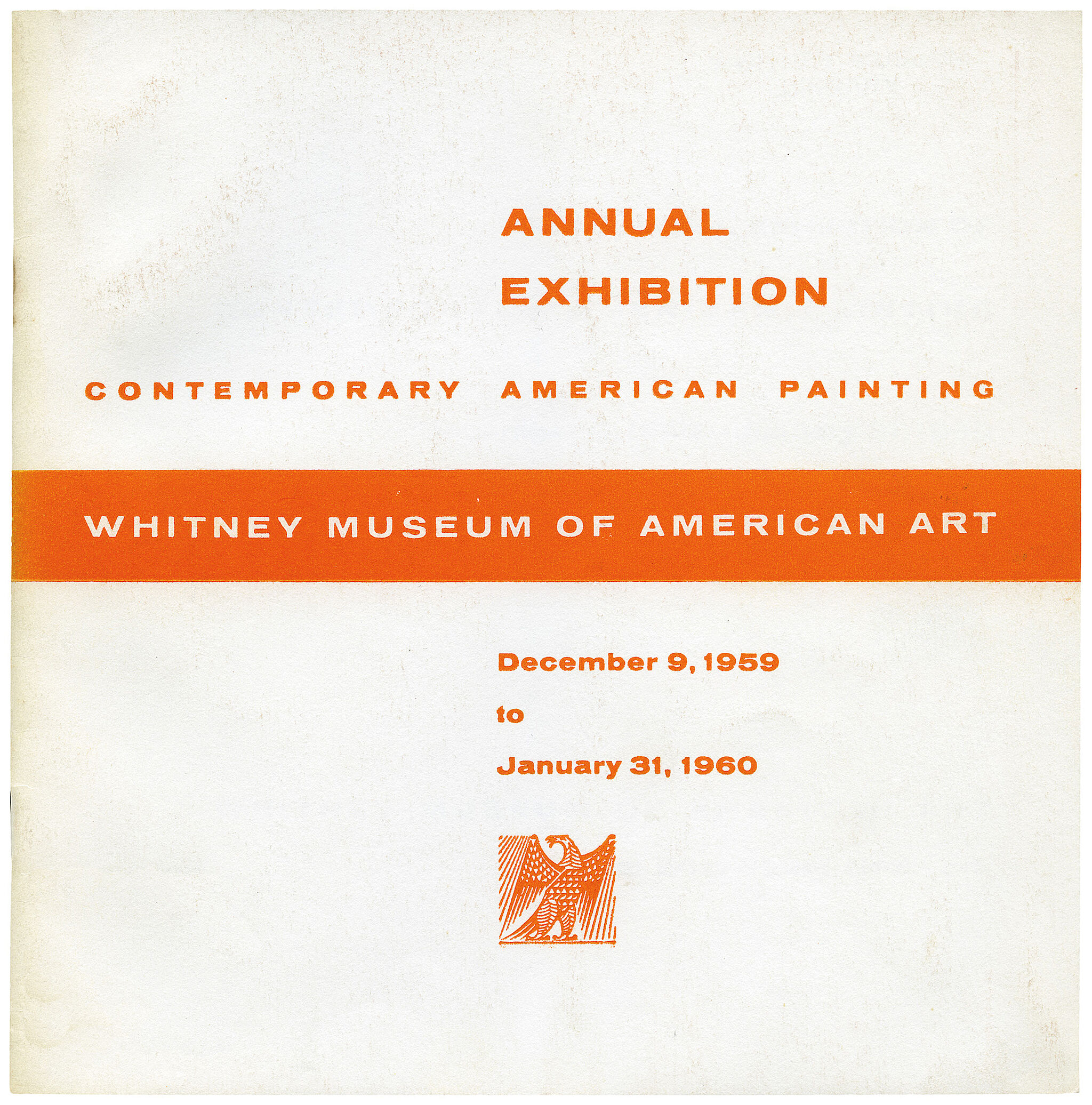Barnett Newman
1905–1970
In the aftermath of World War II, Barnett Newman realized that contemporary painting could not adequately respond to the devastation of the Holocaust or the fear of nuclear weapons. Believing that art faced a “moral crisis” and that as a painter he could no longer condone representational imagery, he argued against the kind of painting that previously “was trying to make the world look beautiful.” Concluding in the late 1940s that “the old stuff was . . . no longer meaningful,” he rejected looking to the past for inspiration and decided to “start from scratch as if painting didn’t exist.” His solution was to paint radically reduced, abstract compositions featuring large expanses of color.
The title of Day One signals a point of departure for painting and for a new world. Newman covered the canvas with a vast red field bordered by two thin vertical bands. He called these signature lines “zips,” painting them freehand or with the help of masking tape. At close range—the distance from which the artist intended his viewers to observe his large works—the painting extends beyond the typical field of vision. Yet by invoking the shared human ability to imagine more than sight apprehends, Newman posits a metaphor for the creative process. He believed that his abstractions communicated a set of moral values because they offered an “assertion of freedom” and a “denial of dogmatic principles.” Ultimately, Day One professes a new beginning, and the hope that humanity might move forward into a better era.
Introduction
Barnett Newman (January 29, 1905 – July 4, 1970) was an American painter. He has been critically regarded as one of the major figures of abstract expressionism, and one of the foremost color field painters. His paintings explore the sense of place that viewers experience with art and incorporate the simplest forms to emphasize this feeling.
Wikidata identifier
Q374504
Information from Wikipedia, made available under the Creative Commons Attribution-ShareAlike License . Accessed December 20, 2025.
Introduction
Newman was born in New York to the parents of Polish immigrants. He studied painting in the 1920s but gave it up from 1940-1944, during which time he destroyed most of his early work. In 1948, he helped found 'Subject of the Artist' an art school in New York, along with Mark Rothko and Robert Motherwell. His work was usually characterized by vertical stripes on large canvases, using a wide range of colors. His painting style, along with his tendency toward the spritual and transcendental, associated him with the Abstract Expressionists. However, the simple form of his paintings would be a major influence on the next generation of Minimalists.
Country of birth
United States
Roles
Artist, art critic, painter, sculptor, writer
ULAN identifier
500000960
Names
Barnett Newman
Information from the Getty Research Institute's Union List of Artist Names ® (ULAN), made available under the ODC Attribution License. Accessed December 20, 2025.





















